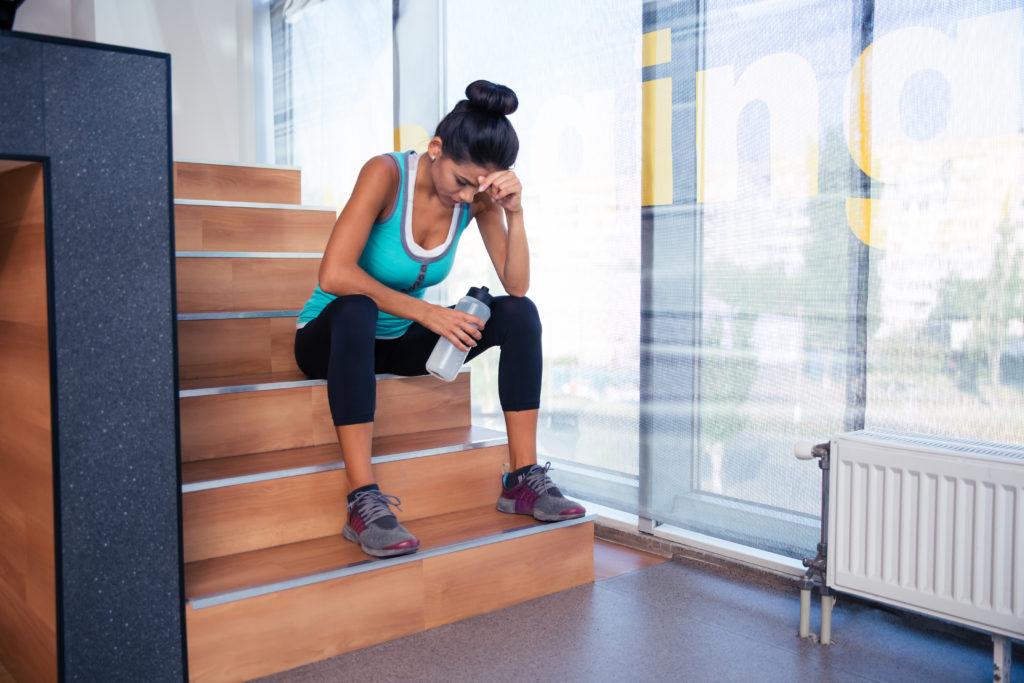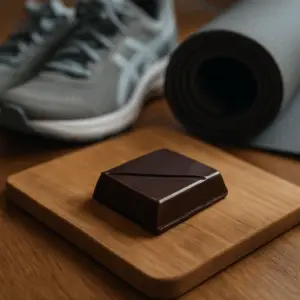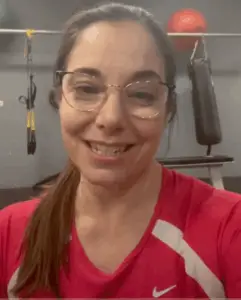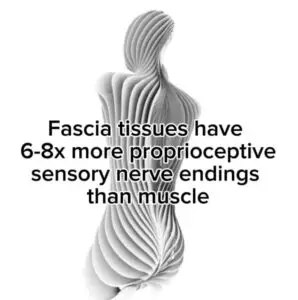Are you among the 550 million people affected by back pain? Have you tried hanging to help with your back pain? Hanging for spinal decompression for back pain seems like a sound idea, but what really goes on when you hang? Is it doing what it said it would do, and is it good for you? Well, check out the video to find out.
Click on the image to watch the full video

Are you hanging? Hanging off a bar for your back pain? A lot of people are, because a lot of people have back pain and so they want a quick, easy fix, and hanging seems to be an answer for them. But like all things for your health and fitness, is that sustainable and is it good for you? And that’s what we’re going to talk about today.
Greetings. I’m Ekemba Sooh. I own SolCore Fitness. I’ve been in this field for 30 years, and I work under the holistic osteopathic model. I’m a Soma therapist and Soma trainer, which is kind of like a physical therapist but a little bit more. And I deal a lot with stuff like back pain or sciatica, shoulder, neck, knee, pain wherever you want in a body. But I also use this program to deal with getting stronger, more mobile. The goal is to live your life to the fullest, so you always want to move away from dysfunction and further into function.
Now, back pain affects 550 million people. It’s a lot of people. There’s a lot of different forms of treatments and exercises out there that could work, and there’s also a lot of forms of treatments out there that says it could work but doesn’t really work.
So I want to talk about this through a holistic view so you get a little more information on what all this stuff means so you can be better informed. And that’s what I like to talk about on this channel, is more holistic view.
So if you like this video, please give a thumbs up. It lets the algorithm know that it’s a good video so more people go watch it. Don’t forget to subscribe and hit that bell and then share it with your friends.
So if you want to use hanging for back pain, obviously there’s times you have back pain, but what level of back pain? So let’s just take a four-part scale, okay? You have basically no back pain, maybe something that happens when you work out, whatever, but basically it’s not there. You have a semi-chronic, which means it’ll pop up every once a while with your back pain. You have a more chronic, which means it’s always there. And then you have acute, which means that hurts all the time, really bad.
If I were to hang, I would tell people in the acute and probably the chronic to never hang. Their body is already pissed off. It’s inflamed. It’s non-functional. It’s giving you a bunch of signs that, “Hey, I don’t like where we’re at.” I don’t want to add something not specific to the routine to help with their back pain, right? It’s going to cause more force in their body than needs to be. Would never do it.
If I was in a semi-chronic, which means it just comes on every once in a while or it goes away, maybe if it was for relief. Okay? If something hurts, you want to relieve it, okay, I guess that works. And then if basically you almost don’t have back pain, if you want to do it every once in a while because it feels kind of good, who cares? It’s not that dangerous. Because danger and being sustainable are two things I look at when I give people type stuff for their back pain. I want to correct it, but I also want it to stay and I also want it to be integrated with the whole thing. That’s what I’m going to look for.
So let’s start with the easier part of this and figure out why people want to hang for back pain. So hanging, it got popular because the concept is very simplistic and it’s supported by a lot of physical therapists or therapists on YouTube and stuff who give hanging or some sort of passive decompression motion to open up your spine.
And so when you go hang, again, it makes sense that if I hang, now the top part of my spine, which is my head and neck, and the bottom part of my spine, which is my pelvis and sacrum, are moving away from each other. And I’m getting tension through my arms by holding and down to my legs, which are to relax. Give you a little demo.
Now, I don’t know if you just saw what happened when I just hung, but I was moving, right? I was moving because I grabbed hold and took my feet off the ground, and because of it I had no stability point on the ground, so my body swayed back and forth. That’s the first problem.
Because you may feel tension through your body because you’re holding on and because your muscles are working and because your body weight’s going down. It may feel like you’re stretching and opening, but in actuality, your muscles are doing a lot of microcontractions to keep you stable.
One of the main things your body wants to do for you is preserve you, right? They want you to live. One of those things is to not have you fall over. So when I’m hanging, the body’s like, “Oh, I’m unstable. Let me correct myself.”
That’s why one of the first directions I give people who work with me is whenever you do a stretch, whenever you do a strengthening, you want to be stable. Because if you’re wobbling even a little bit, what your body cares about is not falling down on its face. Doesn’t give a hoot about stretching or strengthening. So that’s the first issue.
So if I were to hang, I would make sure that my feet stay stable. I would keep my feet on the ground. See? Now I can hold myself in place. Now, how much I keep my feet on the ground and how much I take them off the ground is up for debate, because I can’t have my feet too much on the ground, because now the forces start going back up to my body and aren’t being pulled down. That’s a debate if you want to hang.
The second part of hanging is based off kind of a postural stretch. A postural stretch means I get into a posture and I allow my body to relax and adapt to that, which usually means increasing length of muscles and tendons and ligaments to relax my tissue.
But a postural stretch means that you need to sit there for a long time. So if you think about some of the martial artists who will sit with their butt against the wall and let their legs go off to the side and hang out, stuff like that.
There’s postural stretches I give my clients, my students here that are great. They all involve getting into a posture and being as lazy as possible. Because you get into that posture and you get lazy, and now you let gravity and time do its job.
Do you think you could sit here for a long time and hold on? How long do you think you could hold? Right? After a certain point, you’re going to start to struggle to hold yourself up, and now you’re going to force yourself to hold harder like a competition, but that’s not lazy and relaxed. That’s producing force to keep yourself there. That force means contraction. Contraction means not stretching. It means contraction.
Another little bit of info on when you hang. So when you hang, you’re thinking the whole spine is opening up. Let’s just say for argument’s sake for right now, the whole spine opens up. That’s not totally true. I’ll talk about it later. But let’s just say it does. But now, where do you have back pain? Is it T8, T9? L4, L5? T12, L1? Where do you have the issue?
If I hang, I’ve got a lot of joints in between, which means I have a lot of potential for places to move. More potential of places to move means less specificity. And so if you want to correct something, you need to be specific of where you want to correct it. It doesn’t just happen by magic because you do something like hanging.
So when I hang with both arms, I’ve got a wrist joint, I got an elbow joint, I got a shoulder joint, another part of my shoulder joint. I’ve got all the joints from my thoracic and down to my lumbar that are free.
Where is the most free in that? Because your body is going to move to the least available tension. It is not going to go, “Oh, Ekemba’s hanging. I should open up T8, T9 where his issue.” Nope. It’s going to go, “Oh, I’m hanging. How do I hang the easiest possible? I’m going to move where is the most free.” And where’s the most free, generally it’s not going to be where you have the most issue. It’s going to be compacted and tight and all that stuff, and you can’t get to it by hanging.
Again, to be specific, I can give you a demo here, I need to have a fixed point. So a fixed point means that my back left leg and [inaudible 00:08:40] of my front leg are fixed points for me to push on this cage, because I can develop force because I’m being specific where I want it. If I were to jump off the ground and try and push that thing, I’d have no specific force, I’d just be kind of moving around.
That’s the same thing when you stretch or strengthen. You need to have a relative fixed point. That means you’d go, “Oh, I want to work T8, T9. I need to fix above and below. So in between I can open up.” Right? Because I want to take that joint and move it apart. And when I hang, there’s no specific fixed point maybe except for the hands, which has nothing directly to do with the spine, to allow my spine to open up more.
So on top of not being specific, again, you’re not going to sit there all day long and hang, there’s no way. And then if you’re wobbling even a little bit, your actual muscles are actually contracting in your body. Contraction means usually for the spine coming together, right? If it comes together, we’re not opening spine.
And then let me go one step further. I watched some videos before this to see, and some people even recommend hanging and twisting. That is ridiculous. I don’t agree with that one bit. Your spine, biomechanically, the way whoever you believe designed us, designed it, said that if I twist mainly, but even if I flex or extend, my spine compresses because my body doesn’t do pure movements, it always happens a little bit in rotation. All right?
So if I rotate my spine, it comes together. That’s from the anylosis fibrosis. When one side tightens, the other sides relax, it brings things together. That’s physiological, not because I said so, you can go look it up. So if I hang and twist, now I get all the bad things I talked about before and I’m compressing my spine even more.
Have you tried hanging for your back pain or are you going to try hanging for some back pain relief? Well, stay tuned, because I’m not done talking about all the different things that happen when you hang. Why don’t you stay tuned to hear about that and also what’s a better way to approach this? And then stay tuned to the end because I’ve got some great free resources for you to participate in to learn how to train your body holistically to get rid of back pain or any pains you have, but also to increase the functioning, strength, mobility of your life.
So hanging uses basically a closed kinetic chain. Not totally closed, but I’m going to keep it easy, it’s basically a closed kinetic chain. So you have four kinetic chains. Kinetic just means how you move, right? You have an open kinetic chain, a closed kinetic chain, a semi-open and semi-closed.
Open kinetic chain means the last joint is free, it can move. Closed kinetic chain means the last joint is fixed. So if I want to open my body and develop space in my spine, which is what hanging, the principle’s based on, I want to have an open kinetic chain because I can keep it free. But if I’m holding on, it’s a closed kinetic chain.
So if I’m holding on, it’s kind of like a pull-up, right? I hold on, and because… I don’t want to… The microphone. I hold on and because I can’t pull that bar down, I move up, that’s closed. If I was holding on and that was a pull-down bar, I’m pointing over there because that’s where my pull-down, my cable machine is, if I hold on and I can pull down, that’s open because it’s free, I can do something about it. So I want to have something that’s more open and free, along with all the other things I talked about prior.
The last point is that hanging is assuming that your back pain is only coming from your back. Obviously some of it’s coming from your back because you have back pain, but why do you have back pain? Is it because a classic back pain, a bulge, a herniation, a prolapse, anterolisthesis, retrolisthesis, stenosis, think that’s it, arthritis, which kind of goes along with that? Or is it from a pinched nerve, artery? All these things can cause, vein, can can cause back pain.
So don’t assume that your back pain is only from the back. What people do is they think very linearly, back equals back. And the body’s not linear at all. It’s complex. And everything works together, so everything is going to affect each other.
So with the back, you want to make sure the spine is balanced. You want to have four curves. That’s from engineering, that’s not because Ekemba said so. Four curves, not too big, not too small is a stronger position for the spine.
So I want to make sure that curve stays. And sure, working with the spinal muscles, the paraspinal, the transversospinales muscles is going to go a long way to that. If you’re thinking about just the back muscles, well, just outside the back muscles I’ve got my longissimus. And just outside that I’ve got my iliocostalis.
But that’s only the back muscles. Don’t forget the front. I’ve got my abs, it starts with my TVA, which is a horizontal muscle that’s deep inside my body. It’s the deepest ab muscle. Then my external and internal obliques. Then I also have my rectus abdominis.
But I also have other parts that connect to the spine. I’ve got my ribs. They literally attach to the spine, right? And then on top of that I’ve got the intercostal muscles, I’ve got my diaphragm, I’ve got my pec, I’ve got my lats, I’ve got my traps, I got my serratus anterior, I got my serratus posterior, inferior, superior. I got my deltoids. Right? All those, some more muscles, contribute to my trunk, or as a lot of people call it, core muscles. Core muscles don’t only mean abs doing planks, it means all those muscles.
So in basic, I want the front part of my body and the back part of my body to have even amounts of strength and mobility which help keep my spine in that S shape, which it will help me not have pinches, herniations, bulges or pinched nerves, arteries or veins. So it’s going to help with, big time, not having back pain.
In short, you need to re-educate your body to where you want it to be. If you have back pain is because your posture, your physiology is off-center. Things aren’t balanced, things aren’t working the way they should, things are turned off.
One way to go is the other way, to be balanced, strong and mobile, is you need to tell it what to do. So hanging, in essence, is passive, right? You’re not telling your body to do anything different than what it does. When you hang, even if you feel a little decompression and pain relief, as soon as your feet go on the ground and you start to walk, it’s going to come back, right? It’s going to go back to what it knows, because you haven’t told it to do anything different.
So you need to be specific in where you have the back pain and tell it more what you want to do. If it’s too compressed, “Okay, I want you to open up.” If it’s too asymmetrical, “Okay, I want to balance you out.” You need to use stretches and exercises that re-educate your body to where you want to go.
If it sounds too good to be true, it is, and so that’s where hanging for back pain falls in. I wasn’t too subtle. As I talked about before, you probably noticed I’m not a big fan of it. If you’re basically not in pain and just kind of want to do it to feel a little something, that’s fine. But don’t think it’s sustainable, it’s going to give you the results you want and it’s something you can do to lead you to a different level. It’s not. It’s just there. If you want to sustain results, you have to be very specific with the exercise you give it.
Each joint in your body, each muscle, each tendon, each ligament, they all have different exercises you can do to make sure your body’s balanced. You don’t have to do all at once to make sure you’re balanced, but you have to do an assessment, start where you most need, and then slowly build out to whatever your goal is with training.
If it’s just to hang out and play with your kids or grandkids, it’s going to be less. If you want to go and be Olympic athlete, it’s going to be a lot more. But you got a lot of stuff in between. But everyone wants to live their best life, and using a holistic health and fitness method is by far the best way to get there.
It’s not about what one and two things can I do for this area of my body to get this? Right? The body doesn’t work like that. It may make you feel safe because you can understand it and you can duplicate it, but it won’t get you results.
Now, the best way to get there is with support, and that’s what I’m here for. So I got a lot of free resources that can help you along the way. If you want to be more interactive, ask questions and do, then join my free Facebook group. Right?
All you got to do is answer some… Well, sorry. In description below, that’s a good place to start, click on it, you go there, you’re going to answer some questions, agree to the terms and you’re in. This way I can interact with you personally on the group. We’ll do little mini trainings that I give you some information. We do some master classes on different topics, and we also do challenges where I take a topic, talk about it. We also do exercises and stretches. It’s a good way to be more interactive.
If you want to just read more about what I’m talking about, in the description below I’ve got a link for a free ebook. It’s basically how to live your best life, there’s four steps to that, through stretching exercises. So you click on that, put your information in, you’ll get the ebook.
Or if you want to talk more about your situation, what you should do and how it relates to this type of holistic training, then schedule a free consult.
Use the link below to schedule a time to speak with me, and even if I feel like you’re not a good fit, I’ll give you a bunch of good information. And I’ll only recommend my services to you if I feel you’re a good fit. I’m not going to just tell you to do it because I think it’s for you. I want you to understand what’s best for you, and if that’s working with me, then great. If not, also great.
So I hope this is helpful. I’ll see you next week. Put any questions you have down in the comments. Take care.

MOVE BETTER, REDUCE PAIN, AND LIVE LIFE ON YOUR TERMS
it’s not just working out, it’s building a foundation for a better life.
Find out more @



Leave a Reply